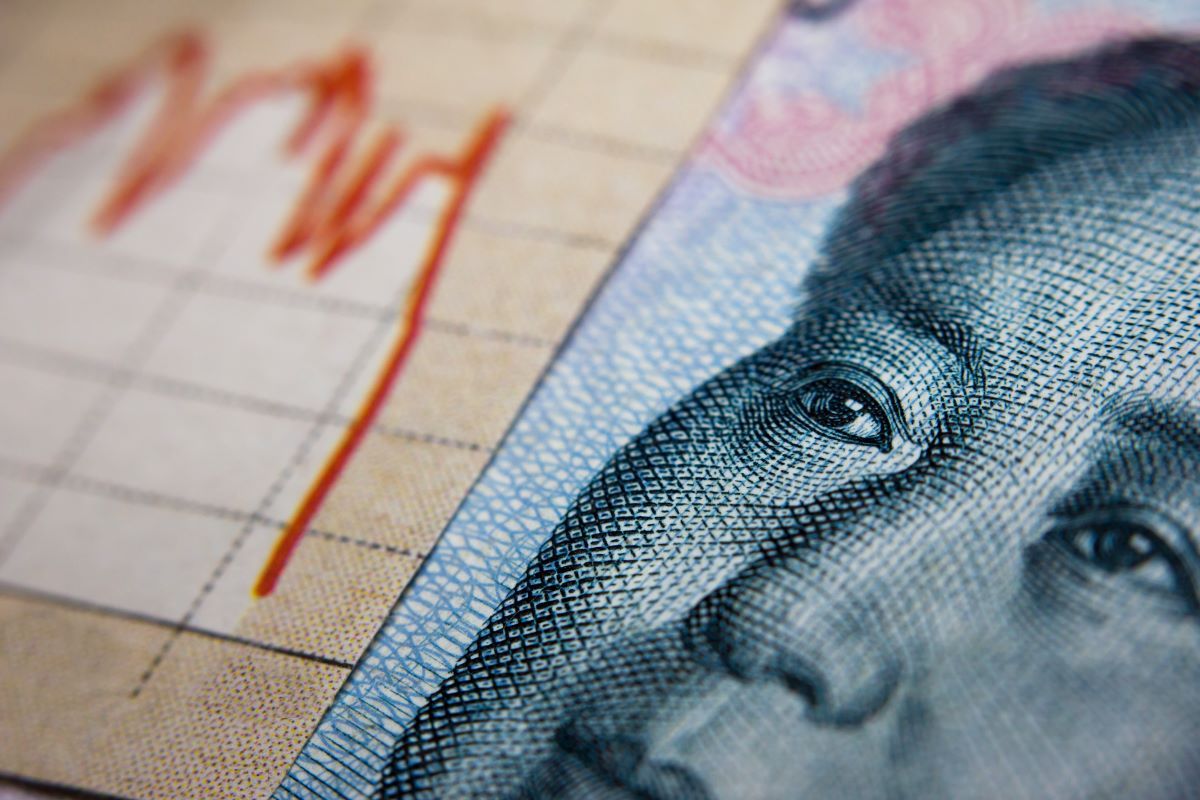China’s stock market is not without its problems, but given the sheer scale of opportunities, it warrants far more than a peripheral market status for equity investors, argues Jian Shi Cortesi, Investment Director at GAM Investments, in this guest commentary.
While global stock markets have performed surprisingly strongly this year, China has been a notable exception. The MSCI AC World index climbed by 18% in USD terms over the first 11 months of 2023. Meanwhile, the broad-based MSCI China A index has fallen by 9% over the same period.
There are many explanations for this dramatic underperformance, some more credible than others. In our view, by trying to sort fact from fiction, investors stand to get a better handle on whether short-term factors may have distorted the picture.
Trade tensions have fed the anti-China narrative
In our view, the boiling over of US-China trade tensions, which had been simmering for years previously, have played a part in distorting many investors’ view of China. I think there is a degree of bias in some popular news outlets, painting a picture that makes investing in China altogether less appealing.
Whatever the explanation, the reality is that while the US, European and Japanese stock markets are seen as core holdings for many investors, China is all too often relegated to peripheral status. And that could mean investors are missing out on what we think is a rare and compelling structural growth story.
Value and inside buyers helping China’s stock market
That said, it could be argued that domestic retail investors are hardly flying the flag for China’s stock market nowadays. Over much of the previous two decades, many became used to the economy growing at a breakneck 6% to 10% every year and took quick and easy stock market gains for granted.
Now, with the economy growing more slowly and the stock market languishing, Chinese retail investors have been largely inactive. China’s domestic market is 80% driven by retail investors, with a holding period sometimes as short as a week. However, value-driven buyers are stepping in and, corporates have initiated share buy-backs this year. Meanwhile, Chinese sovereign funds are also buying.
What are the short-term drivers and brakes on growth?
First, for all the positives, we need to recognise that the country undeniably faces some short-term challenges. At present, the main drag is the real estate sector. In China, concerns centre on developers struggling to pay their mortgages as borrowing costs have risen. Given China’s supply glut of new residential property, the rate of new building needs to slow sharply until demand takes up the slack. Naturally, the consequence is that some developers will continue to go out of business, especially those with the most debt.
Sentiment around these companies remains so poor that their woes are dragging on the market, putting off would-be buyers. Compared to their peaks of 12-18 months ago, property prices in China are now around 10% lower and lower still in some small towns.
Construction activity today is much weaker than two years ago, with the obvious drag effect on overall economic growth. To confound the short-term malaise, the widely forecast post-lockdown rebound in consumer spending has failed to fully materialise.
Standing tall in the face of export headwinds
Another headwind to growth is exports. This is attributable to muted demand from the US, and Europe, along with tech-specific factors. Lockdowns in 2020-21 pulled the demand curve forward as homeworkers clamoured for new laptops, screens, and printers, as well as TVs and mobiles.
We have since seen a resulting down-cycle in demand for this kind of tech hardware, with a slowdown in the semiconductor sector. There has also been some effect of low-end manufacturing moving out of China to lower-cost countries, such as Vietnam and India. This has been happening for the last decade but is now picking up pace.
Yet, even in the face of the headwinds from the real estate and export sectors, China’s economy is still growing at a rate that would be the envy of much of the developed world.
iPhones: how China is moving quickly up the IT value chain
If an average iPhone sold for $600 a decade or more ago, China’s economic ‘take’ might have been a meagre $10. Nowadays, China’s slice has grown tremendously, largely as a result of domestic companies supplying many of the key components, like touch screens, fingerprint sensors and camera modules.
And if China can supply semiconductors, then its take could rise to around two-thirds of the iPhone’s sales price. This prospect could partially explain why the US has been clamping down on semiconductor supply to China.
Simultaneously, China has been investing heavily in semiconductors, pushing to capture an ever-larger share of the value chain for companies like Xiaomi and Huawei.
China may well have already achieved this breakthrough. In September, Huawei raised eyebrows with the launch of the new Mate 60 Pro flagship handset featuring a powerful state-of-the-art processor with components for 5G connectivity seemingly built-in.
This evident breakthrough demonstrates how China is moving to capture value at the cutting edge of tech development and manufacturing. As a consequence, this creates higher-paying jobs that should eventually filter through to boost consumption in China.
Broader theme of technology self-reliance
China’s push to develop advanced microchips domestically does not stop with the chips themselves. The country is prioritising the development and production of machines used to make the chips. Also, major Chinese companies, such as Baidu, Alibaba and Tencent, are launching powerful AI solutions of their own.
The same themes are developing rapidly in medical technologies. The days of Chinese medical device makers supplying only gloves and masks are long gone. Chinese companies are now at the forefront of developments in artificial limbs and AI-driven body monitoring technology.
Elsewhere, China is already a powerhouse in electric vehicles (EVs) and is set to be confirmed as the world’s biggest car exporter this year. And beyond transport-related industries, China’s leading role in producing infrastructure for the energy transition is widely acknowledged.
‘Made in China’ initiative: taking centre stage for decades to come
Although China’s authorities no longer trumpet the “Made in China” initiative the way they once did, the initiative is progressing in line with the long-term plan. In our view, further progress on a multi-decade timescale will be a major driver of sustainable GDP growth, with the associated income growth bolstering domestic consumption.
In the meantime, China’s backtracking from recent over-reliance on real estate construction is likely to meet further bumps in the road. There is no denying that the ups and downs could make for an uncomfortable ride for sectors beyond property in the near term. But China is not looking for popular short-term wins that might entail long-term downside.
Chinese authorities are targeting realistic yet highly attractive rates of economic growth over the long term. They are progressing with their plan to transition the ‘largely emerged’ superpower towards a high-skill, high-wage economy.
With the strategy already delivering results in key sectors, we think investors overlooking Chinese equities risk missing out on long-term structural growth opportunities.
Jian Shi Cortesi

Head of Thematic Research
GAM Investments
Jian Shi Cortesi, serving as the Investment Director at GAM Investments, is also a member of the asset manager’s Global Growth Equity team. She has a bachelor’s degree in International Business from China’s Beijing Foreign Studies University. Additionally, she completed her MBA at the University of Tennessee in the United States. She joined GAM in 2010.










 Australia
Australia China
China India
India Indonesia
Indonesia Japan
Japan Malaysia
Malaysia Philippines
Philippines Singapore
Singapore South Korea
South Korea Taiwan
Taiwan Thailand
Thailand Vietnam
Vietnam Germany
Germany Hong Kong
Hong Kong USA
USA Switzerland
Switzerland Singapore
Singapore
 United Kingdom
United Kingdom








